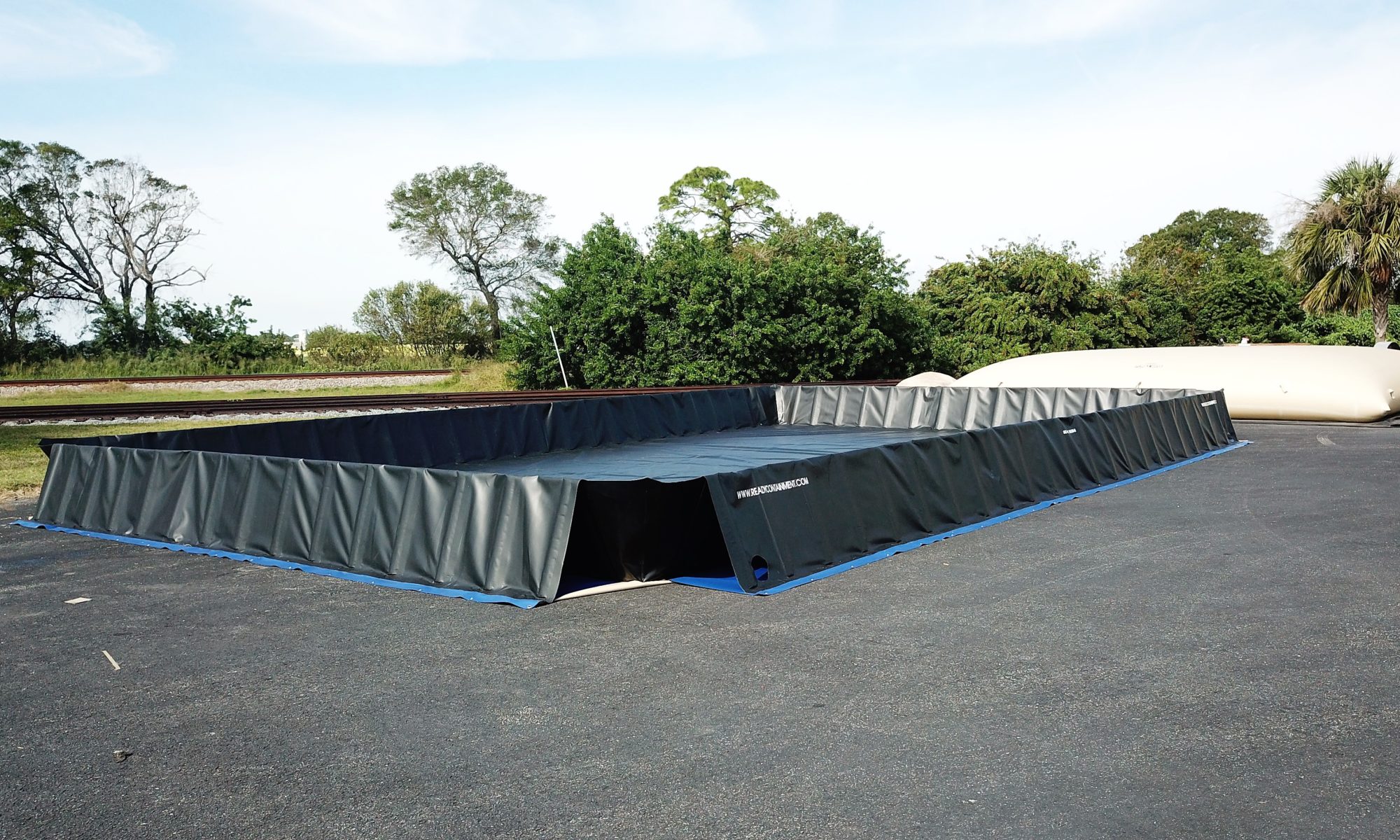In environmental and workplace safety, both spill berms and spill pallets are commonly used tools for spill containment. These tools are essential for ensuring that hazardous materials don’t leak or spill into the surrounding environment.
Spill Berm
Definition: A spill berm is a barrier or containment system often made from flexible materials designed to create a raised edge around a specific area. Its primary function is to prevent spilled or leaked liquids from escaping the enclosed space. Ready Berms are single piece spill berms designed for easy deployment and us.
Features and Uses:
- Flexible and Portable: Spill berms are often made from lightweight, collapsible materials, making them easy to deploy, move, and store.
- Variety of Sizes: They come in various sizes and can be set up to contain larger equipment like trucks, tanks, or machinery.
- Application Areas: Common in refueling stations, machinery storage areas, and any location where there’s a potential for large-volume spills.
Spill Pallet
Definition: A spill pallet is a platform, usually constructed of plastic or metal, designed to hold containers like drums or totes. They have a built-in containment sump to capture and contain leaks or spills from the stored containers.
Features and Uses:
- Solid Construction: Typically made from high-density polyethylene (HDPE) or metal, spill pallets are sturdy and resistant to chemicals.
- Limited Capacity: Designed mainly for drums or totes, spill pallets can generally contain spills from the containers placed on top of them.
- Application Areas: Commonly used in warehouses, factories, and storage facilities where drums or totes are stored.
In Summary:
While both spill berms and spill pallets serve the primary purpose of spill containment, they differ in their construction, use, and application areas. Spill berms offer flexibility and are suitable for larger areas and varying equipment sizes. In contrast, spill pallets provide a sturdy platform primarily for drum or tote storage, ensuring that any leaks or spills from these containers are adequately contained. When selecting the right containment solution, consider the type of equipment or containers you’re dealing with and the volume of potential spills.
